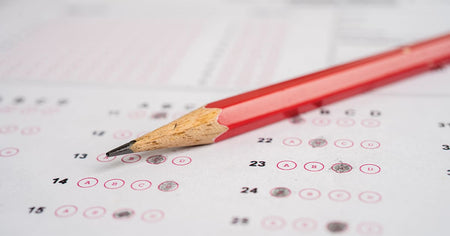Don’t Make These Five Assumptions About Students
During the first weeks of school, we spend significant time and energy getting to know our students and having them get to know us. We know that the more we know about our students, the better able we will be to meet their needs and support their learning.
However, getting to know a class or multiple classes of learners is a significant undertaking. We may discover that we gravitate to some students while finding others to be a challenge. We may also look for shortcuts to create an image and profile of our students. Consequently, we can be tempted to make assumptions about students based on factors such as their appearance, what we have heard about them from colleagues, our early interactions with them, or their initial performance in our classroom. Some of our assumptions may be correct, but others may need to be reexamined and adjusted with further experience. However, there are at least five assumptions about students that we need to avoid altogether.
We need to resist assuming that a student:
- Will behave just like their siblings. When students who are siblings of former students enter our class, we can be tempted to make assumptions and prejudge their character and behavior based on our experience with a brother or sister, especially if there is a close physical resemblance. Our prejudgment can be positive or negative. Regardless, our assumptions can be harmful to these students. We may unintentionally place unrealistic pressure on them to perform. Or we may be quick to pounce on any misbehavior, thinking that we need to get ahead of a negative behavior pattern. Whether positive or negative, they are just assumptions, and they risk our misjudging and treating these students unfairly.
- Is not interested in a relationship with us. We sometimes experience students who seem resistant to our attempts to get to know them and form a relationship. It can be tempting to assume that they are not interested and pull back in our efforts to connect. Of course, one possibility is that the student truly does not want to connect with us. However, there are many potential reasons why a student might be reluctant. Negative past experiences might make the student hesitate, or they may be hiding factors and pressures in their lives that they do not want revealed should we get close to them. Our persistent invitations and continued opportunities to connect may be exactly what the student needs to break through the barriers they face and overcome their reluctance to allow us to connect with them.
- Is a lazy person and learner. Some students may seem to care little about the learning we ask of them. They may appear disengaged and not responsive to our instruction. Based on our observations, we might assume that the student is just lazy and uninterested. While we might be correct, this judgment is just one of many possibilities. The student may be reluctant to invest because of a pattern of failure in the past. What they need may be our support and coaching. They may be dealing with challenges outside of our class and school that are overwhelming, leaving them with little bandwidth to invest in learning. Our interest and understanding, and maybe a referral for help, might be what they need to find their way and invest in learning. We gain little by assuming laziness and applying increasing pressure on them to change their behavior. In fact, doing so may make the situation worse.
- Will continue to perform in the future as they have in the past. The truth is that past performance does not have to predict future performance. Many factors can influence the effort, focus, and persistence students will give to their learning. In fact, we may be the force that changes the trajectory of their learning and future. Our confidence, persistence, and encouragement may be exactly what is needed to interrupt a pattern of failure. Interestingly, even small shifts and incremental improvement now can magnify over time. Our influence to build confidence, fill skill and knowledge gaps, and nurture a sense of hope and possibility can make a lifelong difference, regardless of the student’s performance before encountering us.
- Is motivated by the same things that motivated us. History shows that we often teach the same way that we were taught. We may assume that what worked for us should work for our students. Similarly, we might assume that the factors that we found motivating as learners are the same factors our students should find motivating. We may have performed because we felt it was expected of us. We may be drawn to academic activities and find formal learning satisfying and fun. However, even though these factors were powerful for us, they are not universal motivators. Many students will not respond to these factors but may be drawn to others. We know from research that elements such as autonomy, mastery, purpose, and sense of belonging are near universal motivators, but even these factors vary in their power to motivate from student to student. Some learners respond to having more flexibility and choice while others want to know how what they learn will be important and useful. Our challenge is to get to know our students well enough to understand what motivates them. When we know, we can design learning experiences that draw on and maximize the impact of these factors on their learning.
Assumptions can feel like shortcuts to understanding our students. However, assumptions can be traps that lead us to treat students in ways that, while seeming reasonable, can be harmful to our students, their learning, and their relationship with us.















